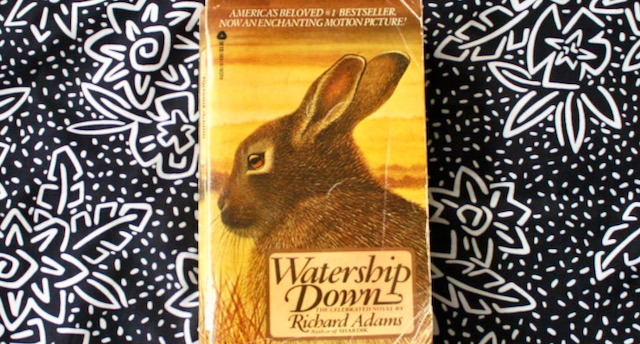Watership Down is another novel that doesn’t often appear on these kinds of lists, probably because it’s thought of essentially as a children’s book, or at least YA. But the book won the Library Association’s Carnegie Medal in 1972, recognizing it as the best children’s book of the year. It also won the Guardian Prize in the same category. And in 1977, the children in California voted to give it the California Young Reader Medal in the YA category. Probably most significantly, in the 2003 “Big Read” survey, the British public voted Watership Down the 42nd greatest book of all time. So I feel justified that my choosing of the novel is not merely subjective.
I must confess, though, that I would have put this book on my list in any case. When I read the book (well past my own YA days) I was absolutely carried away by the adventure story of Hazel and Bigwig and their journey to a new home at Watership Down. Their Odyssey recalls the great myths of the western world—like, for instance, well, the Odyssey. Or Moses leading the chosen people to the Promised Land. And this is particularly unusual because the novel’s protagonists are, well, rabbits.
I have never seen evidence that Tolkien read Watership Down. It came out the year before his death so he may never have seen it, but it is the sort of book he would call a “Faerie Story,” and for Tolkien Faerie Stories, like Lord of the Rings itself, were not strictly for children. This applies to Watership Down as well. It has often been taken out of classrooms because of its dark and violent aspects. But these are vulnerable creatures in a world of Nature red in tooth and claw. It’s not Beatrix Potter.
These facts coupled with the Lapine language that Adams invented, as well as the mythology that he imagined for the rabbit civilization, place Watership Down in the realm of High Fantasy rather than simply YA. Adams made it clear that Tolkien was one of his inspirations (Rabbit—Hobbit. Coincidence? I think not), and his novel belongs to that genre. And I belongs on my list.
Let me give you a little synopsis of the story’s situation if you haven’t read it yourself: In Sandleford Warren, where the rabbits live, Fiver, a seer, tells of a vision he’s had in which Sandleford is destroyed. He and his brother Hazel go to the Threarah, the chief rabbit, to warn him, but he is unconvinced, and so they talk to other rabbits, only nine of whom agree to join them. Though the Owsla, the military arm of the warren, tries to stop them leaving, considering them rebels against the Threarah, they are able to leave the warren and start their journey to their new home at Watership Down. Hazel eventually becomes leader of the group, helped by Bigwig and Silver, former members of the Owsla and the two strongest rabbits among the travelers. They overcome one danger after another on their journey—badgers, crows, dogs, cars, even a farm they are enticed to settle in whose farmer protects rabbits from predators (for the purpose of “harvesting” them for food and furs, it turns out). Eventually a new colony is established, and the novel follows the archetypal motif of the hero’s journey, familiar from Jung and Joseph Campbell.
The publication history of Watership Down is an interesting lesson in modern publishing. The novel was rejected by every major publisher in the UK, until it was finally accepted by a small one-man press. If you’ve ever sent a book to a publisher and had it rejected because it “wasn’t similar enough to the books we usually publish,” then you know something of Richard Adams’ frustration. Nevertheless, he persisted. Kudos to Rex Collings, who took a chance on a creative idea when other publishers just wanted the same old same old.

